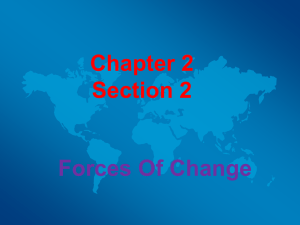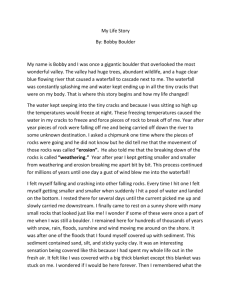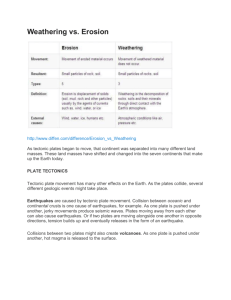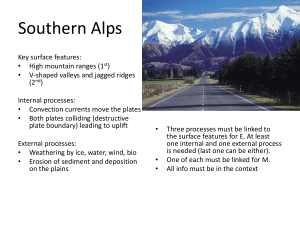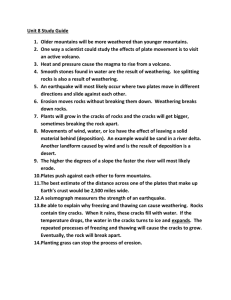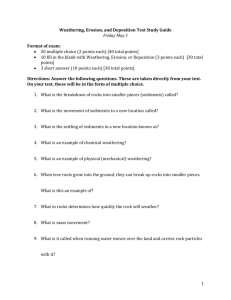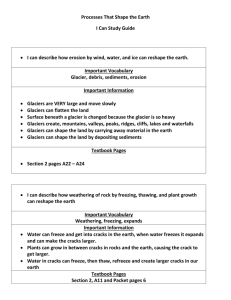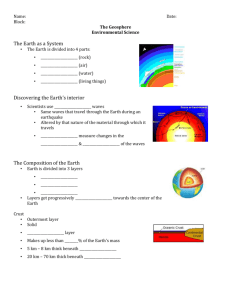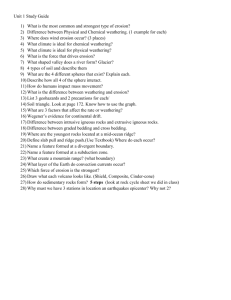Sci.Fusion Unit 8 Study Guide
advertisement
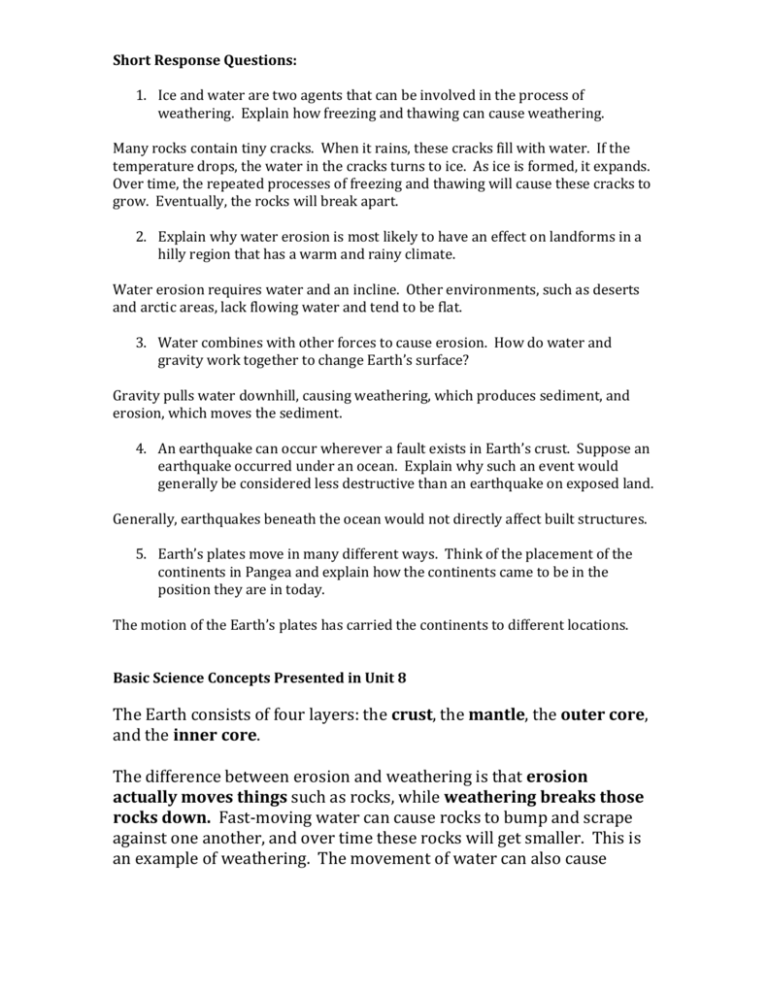
Short Response Questions: 1. Ice and water are two agents that can be involved in the process of weathering. Explain how freezing and thawing can cause weathering. Many rocks contain tiny cracks. When it rains, these cracks fill with water. If the temperature drops, the water in the cracks turns to ice. As ice is formed, it expands. Over time, the repeated processes of freezing and thawing will cause these cracks to grow. Eventually, the rocks will break apart. 2. Explain why water erosion is most likely to have an effect on landforms in a hilly region that has a warm and rainy climate. Water erosion requires water and an incline. Other environments, such as deserts and arctic areas, lack flowing water and tend to be flat. 3. Water combines with other forces to cause erosion. How do water and gravity work together to change Earth’s surface? Gravity pulls water downhill, causing weathering, which produces sediment, and erosion, which moves the sediment. 4. An earthquake can occur wherever a fault exists in Earth’s crust. Suppose an earthquake occurred under an ocean. Explain why such an event would generally be considered less destructive than an earthquake on exposed land. Generally, earthquakes beneath the ocean would not directly affect built structures. 5. Earth’s plates move in many different ways. Think of the placement of the continents in Pangea and explain how the continents came to be in the position they are in today. The motion of the Earth’s plates has carried the continents to different locations. Basic Science Concepts Presented in Unit 8 The Earth consists of four layers: the crust, the mantle, the outer core, and the inner core. The difference between erosion and weathering is that erosion actually moves things such as rocks, while weathering breaks those rocks down. Fast-moving water can cause rocks to bump and scrape against one another, and over time these rocks will get smaller. This is an example of weathering. The movement of water can also cause erosion. An example of this when fast moving runs through as area and causes canyons. A plant can cause a rock to weather. A plant’s roots can begin growing in a small crack in a rock. As the plant grows, its roots can force the rock apart until the rock breaks apart. Deposition occurs when eroded sediments are dropped off in another place. Water, wind, or ice may have the effect of leaving a solid material behind. An example of this is sand in a river delta. Sand dunes typically form in an area where some kind of obstacle causes wind to slow down. For example, sand dunes may form in an area where the wind is slowed by vegetation. As the wind slows, sediments carried in the wind fall to the ground. As the sediments collect, they too become an obstacle for the wind and cause the wind to slow even more. This slowing of the wind will likely cause the rate of deposition to increase. Over time, sand dunes may become several stories high. Glaciers can change landforms through erosion and depostition. As glaciers move forward, they pick up material (erosion). As glaciers melt, they drop material (deposition). A melting glacier may deposit enough material to form large hills. Plate Boundaries: Tectonic plates move toward each other, away from each other, or slide past each other. When two continental plates move toward each other, they collide and form mountains. An example of this is the IndoAustralian plate pushing against the Eurasian plate resulting in the Himalayan Mountains. Plates can pull away from each other, forming a rift, or separation. Magma can force plates to push apart. Heat and pressure can cause the magma to rise. Plates can also slide past each other. An example of this is the San Andreas fault where the North American plate is moving southward, and the Pacific plate is moving northward. When they rub together and slip, earthquakes occur. The typical estimate of the distance across one of the plates that make up the Earth’s crust is 2,500 miles wide. The best way to learn about the effects of plate movements is to visit an active volcano.
